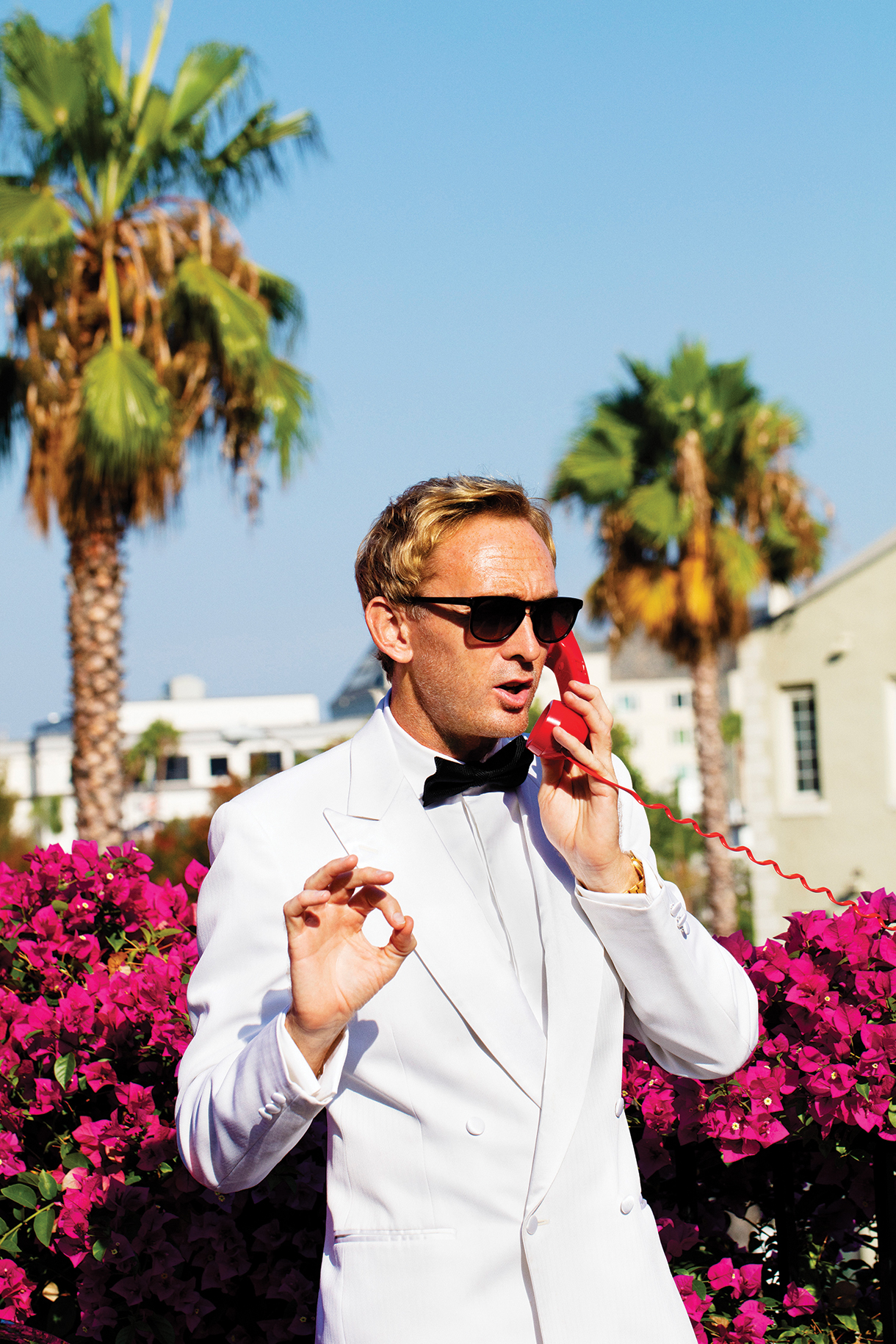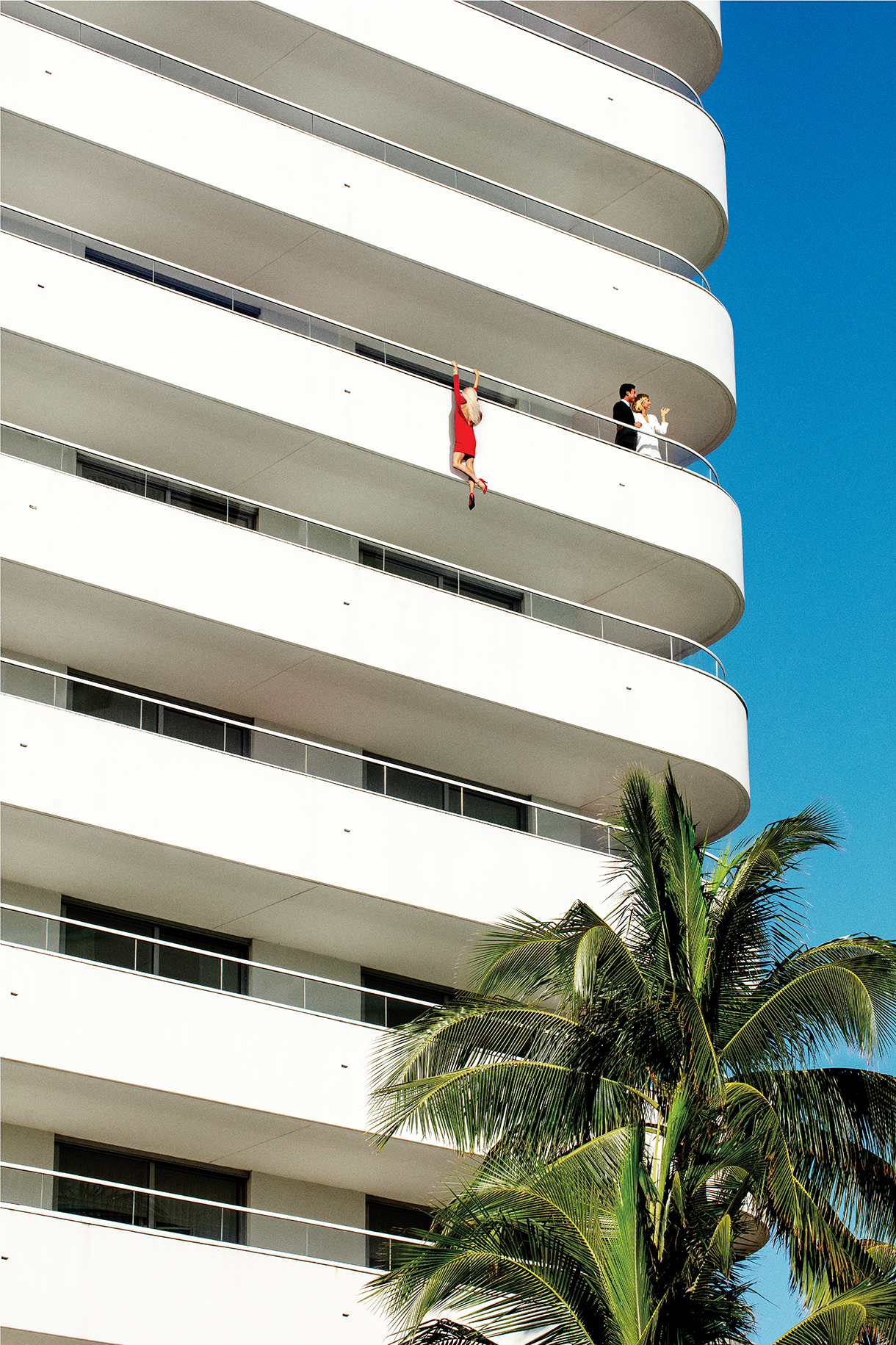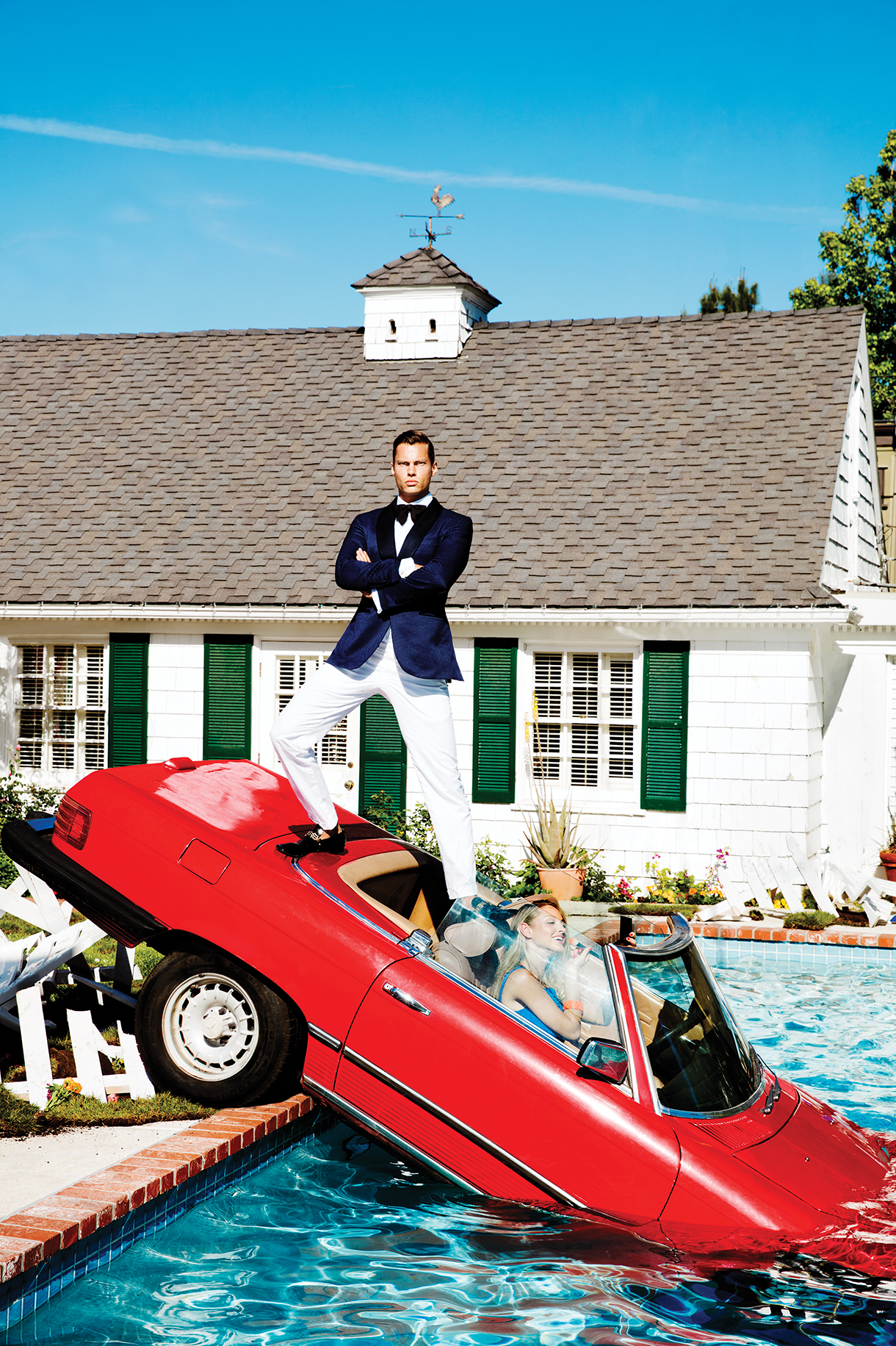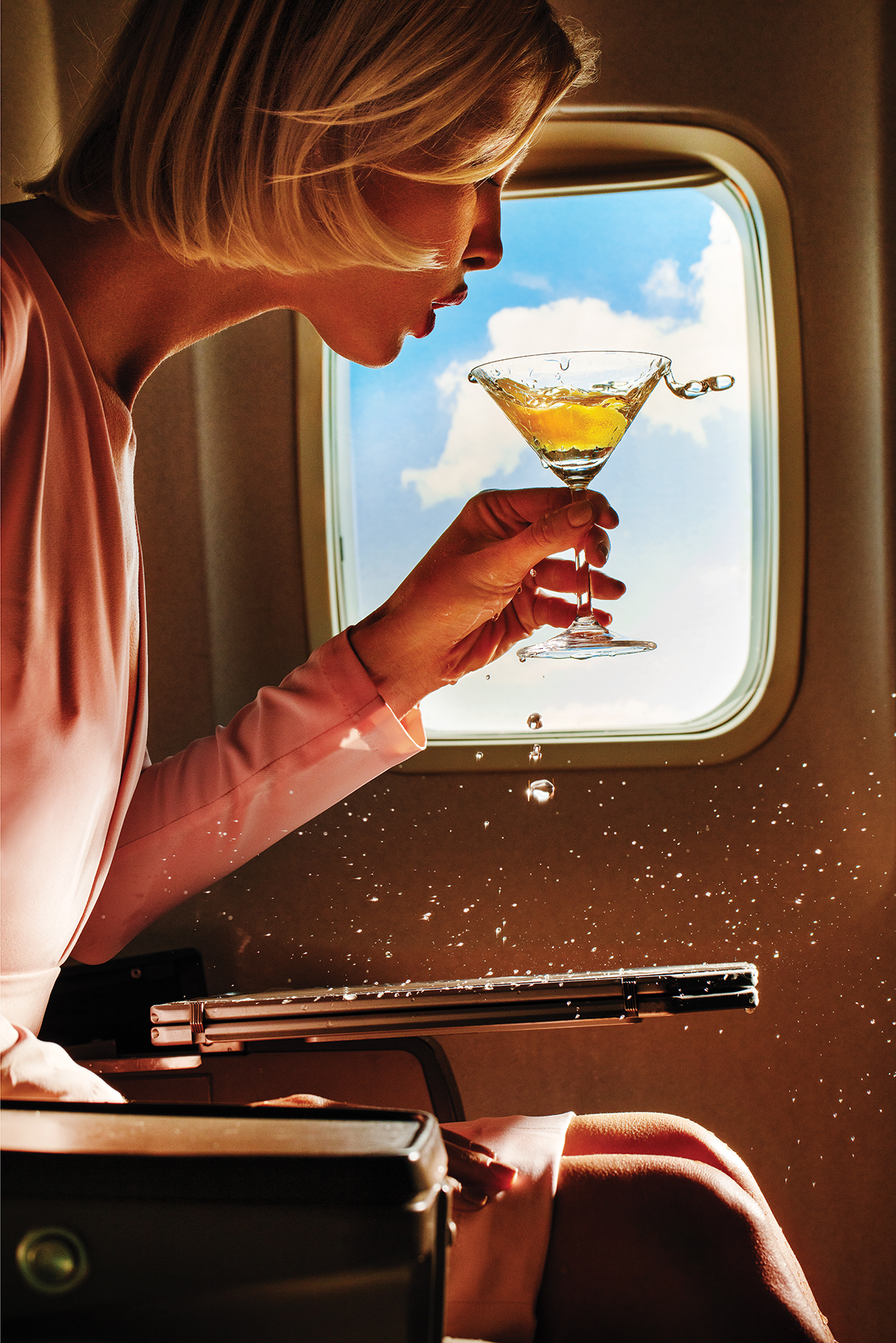
Model Nation
Fine art photographer Tony Kelly

BOLD HYPER-SATURATED IMAGERY
As a 27-year-old press photographer, Tony Kelly had done well for himself. The self-taught, Dublin native had worked his way up the ladder in the world of photojournalism—starting as one of the youngest-ever hires at the Evening Herald, a local paper, before moving to national news, and finally to News International’s London office based in Ireland.
“When you’re a reportage photographer, you’re an observer. You’re recording a moment,” says Kelly, 48. The war in Afghanistan, the World Cup in Japan, celebrities and supermodels in town for both work and play: Kelly’s photographs at this time were indeed like documents recording life itself. In 1996, he was the only one to capture Liam Gallagher sticking his tongue into Bono’s mouth when Oasis came to play in Ireland—a moment that went viral before “viral” was even a thing.
“I really thrived on [the] excitement and the pulse. You’d be driving your car, eating your lunch at the same time,” he says of this window in his life. “It was high paced but rewarding when you got the picture, ya know?”
Yet it was the pictures Kelly wasn’t getting—the conceptual ones forming within his mind’s eye—that began coming most into focus. On the occasions he was assigned to shoot the newspaper’s fashion page, a groundswell of a feeling would arise.
“It was one of the few jobs where you were able to create your own kind of story or world,” Kelly recalls.
While the other photographers did what had always been done and shot the models “out the back door in the laneway,” Kelly took them to the beach. He staged shoots that were loosely threaded to the sense of escape and fantasy that would later permeate his conceptual work, and found himself thinking: “This is what I wanna do.”
He wanted to change course. So that’s exactly what happened.
At 27, Kelly quit his job and moved to Barcelona, where he began knocking on the door of an internationally recognized photographer named José Manuel Ferrater. After about six months of knocking, Ferrater agreed to something that would change the course of Kelly’s life entirely. He let Kelly assist him. Anyone who has spent time in the darkroom knows there’s a moment in black-and-white photography where the paper is dipped into trays of chemical solutions. Though the paper looks blank at first, the lines and shapes and tones of the photograph begin to reveal themselves as they soak. It’s what’s known as “processing,” and it’s what Ferrater was for Kelly. In Barcelona, the Spanish photographer was engaged in a process of watching Kelly become himself—sensing the portrait of the artist before the artist could fully see the portrait with his own eyes.
“José Manuel said to me: ‘Few people have your background as a reportage photographer. You need to continue the same thing. Create your own stories, just put a model in them.” He told Kelly not to bother with all the lighting equipment or the black backdrops. “‘You need one light source: the sun,’ he said.”
As Kelly’s aesthetic began to reveal itself, Ferrater imparted one more piece of wisdom that still makes the hair on Kelly’s arms stand up: “Your work belongs on an American landscape.”
In the 13 years since Kelly first set foot in West Hollywood, Los Angeles has become the nucleus of his fine art work. If it isn’t the backdrop itself, La La Land is the genie spirit emanating through the imagery’s hyper-saturated color palette, tone, and distinctly Californian light. You can see this in Rooftop Parking, for example, where the tail end of a Porsche protrudes from a roof that a nude model in heels climbs toward. In Off-Piste, a model wearing skis mounted to the top of a Ferrari is driven through a mountainscape. The work brings the drama and cinematic excess of a James Bond film; it’s also coated in the Irish wit that emanates from the photographer when he’s in story-mode.
From a hotel room in Rio de Janeiro, where Kelly was preparing for an upcoming shoot, we spoke about the creative process, Los Angeles as a pronoun, and the essentialness of fun. This interview is a condensed and edited version of that conversation.

The Good Life

Carpool
INTERVIEW WITH TONY KELLY
You’re in Rio.
Yeah, I’m preparing to shoot here next week. I haven’t been in about 10 years, but I used to come to Rio to shoot and to hang out. You know when you have a special vibe with a place? But I think the pandemic hit pretty hard. This place seems to have lost a little bit of its beat. Maybe it’s because it’s a Tuesday—we’ll see over the next few days.
What was it like growing up in Ireland?
That’s my foundation. That’s my DNA—not just physical DNA, but social DNA, visual DNA. Everything starts there. When I travel the world, or when I am seeing things or visualizing ideas or concepts, I see them through Irish eyes. Even though I live in West Hollywood and that’s my kind of studio, I’m still an Irish guy and I always want to be a tourist. I’ve been in Hollywood for 13 years and I still see it with fresh eyes.
But to answer your question, growing up in Ireland is a very unique experience. It’s an island, so you always have the longing to travel—which is a great thing. In terms of the Irish people, that’s the real warmth and strength. Whilst the climate can be cold and damp, the people can be quite warm. Tropically warm. It’s a very grounding place that I suppose nourishes decency and respect for people. As a guy who lives abroad, if I were to go home and start blabbing on about what I’ve done or who I’ve taken pictures of, I’d be quickly grounded.
You’d be put in your place ...
In America, the richest guy [is the one] who gets the attention. In Ireland it’s whoever’s the funniest. That’s who has the power.
There’s a definite sense of luxury woven into your work. When did you first become interested in that side of things?
I remember going to the bookstore in the early days of my career and buying Yachting World. I was looking at these millions of dollars of yachts for sale and just kind of loved the visual, the fantasy of it. I didn’t really have aspirations to save up money and buy a $10 million yacht. I still don’t. That’s not what inspires me at all. It was the visual. The escapism, I suppose. And that’s what I do today with people: I take them on a visual journey. But I’m very much still Tony from Dublin.
Were your parents in the arts?
No. My father is in the print business, and my mother was a mom. She didn’t really work. But she played guitar and piano and would be quite musical and a bit artsy as well.
So how did you get into photography?
I just started taking pictures. I liked the camera. I liked that it was kind of a magic wand in a way. There was this great journey that you could go on with the camera—and I’d get into football games and events, even horse show jumping. I was going to events when I was 18 or 19, kind of as a press photographer, but I wasn’t working for anybody. I just did it for myself. And most of what I do today is for myself, including my fine art collection. There are certain photographers who need to be told what to do. I am the opposite.
What did press photography teach you?
When I look back retrospectively, it taught me to be resourceful. Today, if my camera doesn’t work—and I don’t mean this to sound cocky—I have an assistant and I have a digitech. Back then, I had myself. If my camera broke, I had to work it out. I remember before I even got the job at the newspaper, I was taking an important picture and the flash wasn’t correct. I was shooting through a car window and the flash reflected, so I didn’t get the picture of the Prime Minister of Ireland. He was going into an event, and my brain was immediately thinking: “What time is the event finished?” I went back and waited for him to come out so I could get the picture. Determination is definitely an element for me. I had to do that with a recent [helicopter] and ski lift shoot in the Alps. We got the shot, but it was OK. I wasn’t happy with the sky. And I was like: “No question, I don’t care. We go back the next day and keep going until we get it.” That’s the way it works. And that all comes from those early days: the grind of it.
Where does the creative process begin for you with your fine artwork?
From the beginning I’ll see the finished product in all its glory. I feel it, I can see the color, and often I’ll work backwards. But the real simple philosophy of my work is: It’s fun. It’s to be enjoyed. If you ask psychologists what’s lacking in people’s lives, it’s fun. To be entertained, to have a smile on your face—these are powerful things. It’s not always fun when you’re making the pictures, but there’s always fun elements to it.
LA is central to your work. Tell me about the day you arrived.
It was the day Michael Jackson died. The taxi driver was like, “MJ is dead.” And I was like, “MJ? Michael Jordan?” It was a public, city-wide wake. People were dancing, playing his music in their cars. With my press background, I said, “Where is Michael now?” The driver said he was at UCLA, so we drove there. I still have the pictures somewhere.
When I got to LA, I remember I had initially thought: “I don’t like this place. These people are fake.” From Ireland, you have a radar that’s pretty strong with what’s bullshit. But I remember opening the curtain in the hotel room I was in—The Mondrian looks over the city and also the Boulevard. It was a bit misty that morning, but the moment I opened that curtain and saw the billboards and the hills I was like, “I love this place. The visuals are so strong.”

Turbulence

G-Wagon
If you had unlimited funds and could live anywhere in LA, which part would you choose and why?
I need to be close to Sunset Boulevard, which I’m about 100 meters away from now in West Hollywood. It’s the lifeline of Hollywood for me, the backbone, the spine of it all. Chateau Marmont and the Sunset Tower, these are my point A. If I lived up in the hills in Bel Air or Holmby Hills, I’d probably have to get in the car and drive down the Boulevard every day to check out what was happening.
What’s inspiring you right now?
There’s something I’m working on that goes back to a Bond movie where a Lotus goes off the end of a bridge and into the water. I want to do that with a Ferrari and I have some of the elements in place. James Bond was a big influence of mine growing up. Beautiful ladies in a helicopter, men in tuxedos. I just love that stuff.
On a personal level, we were just at Alan Faena’s wedding in Buenos Aires and I was super inspired by the people there. The people in Argentina were just very warm, friendly, and very, very inspiring. I was really inspired to come to Rio too. There was a surfing documentary called Riding Giants and in it, one of the first guys to surf the North Shore is nearly in tears as he’s remembering a wave that came in. He says, “I swear man, she just winked at me.” I haven’t felt that wink from Rio yet, but I’m waiting for it. This place is the ocean, the rocks, the greenery, the colors, people of all shapes and sizes. It’s like a cocktail that just blends together.




